Specialist Butt Fusion Welding Services for PE Pipelines
Pipe Testing Services (PTS) provides high-quality butt fusion welding services for joining sections of polyethylene (PE) pipe and fittings across the UK. Also known as hot plate welding, this trusted method creates seamless, permanent, leak-proof joints that are as strong as the pipe itself. Our certified technicians use modern, calibrated equipment to deliver reliable results for a wide range of water and industrial applications.
What is Butt Fusion Welding?
Butt fusion welding is a process that uses heat and pressure to join PE pipes of the same diameter and wall thickness. Instead of using mechanical fittings, the pipe ends are melted and fused to create a single, continuous pipeline. Our process follows these key steps:
- Preparation: The pipe ends are carefully clamped and then trimmed using a facing tool to create clean, parallel surfaces.
- Heating: A thermostatically controlled heater plate is placed between the pipe ends, heating them to the correct melting temperature.
- Fusion: The heater plate is removed, and the two molten pipe ends are pressed together under a controlled, specific pressure.
- Cooling: The joint is held under pressure for a set time while it cools and solidifies, forming a permanent, monolithic weld.
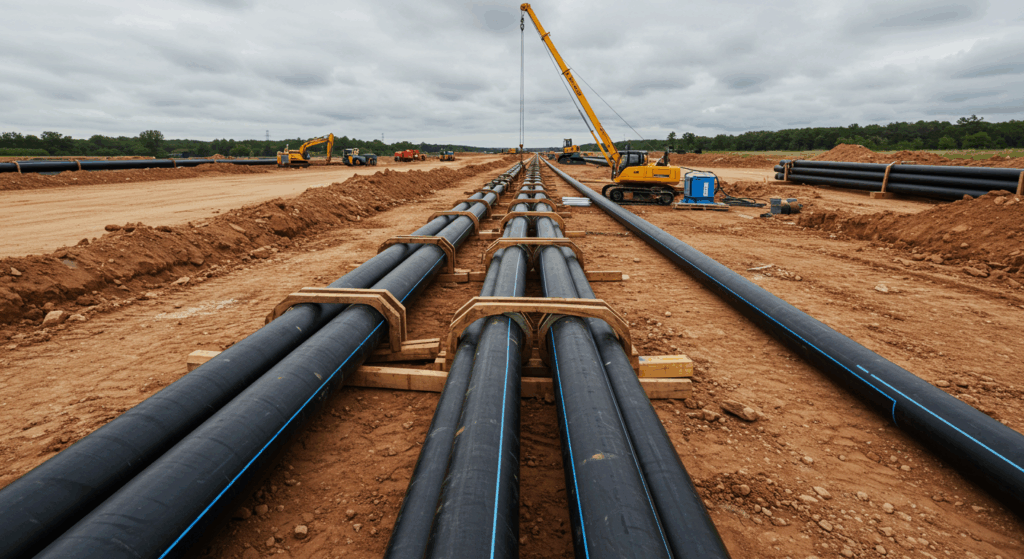
Key Benefits of Butt Fusion Welding
When performed correctly by certified technicians, butt fusion offers clear advantages over other joining methods:
- Exceptionally Strong Joints: The fused connection is monolithic, creating a joint that is as strong, or stronger, than the parent pipe.
- Long-Term Reliability: With no gaskets or seals to degrade over time, a butt fusion weld provides a permanent, leak-proof solution for the life of the pipeline.
- Consistent Quality: The process is controlled by modern equipment that monitors temperature, time, and pressure, ensuring repeatable, high-quality results.
- Cost-Effectiveness: For long runs of pipe, butt fusion is often a more economical joining method compared to mechanical fittings or electrofusion.
Take a look at our dedicated pipe fusion welding service page to get more information on the types of fusion welding techniques we employ at PTS. Don’t hesitate to get in contact if you’re in need of fusion welding services.
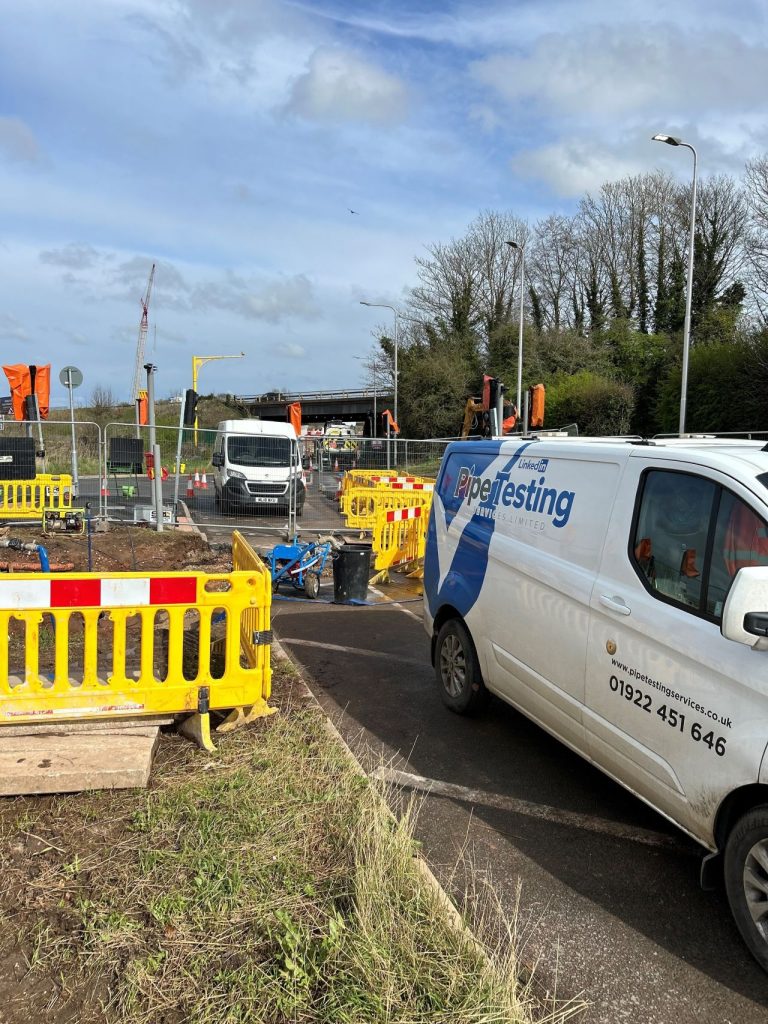
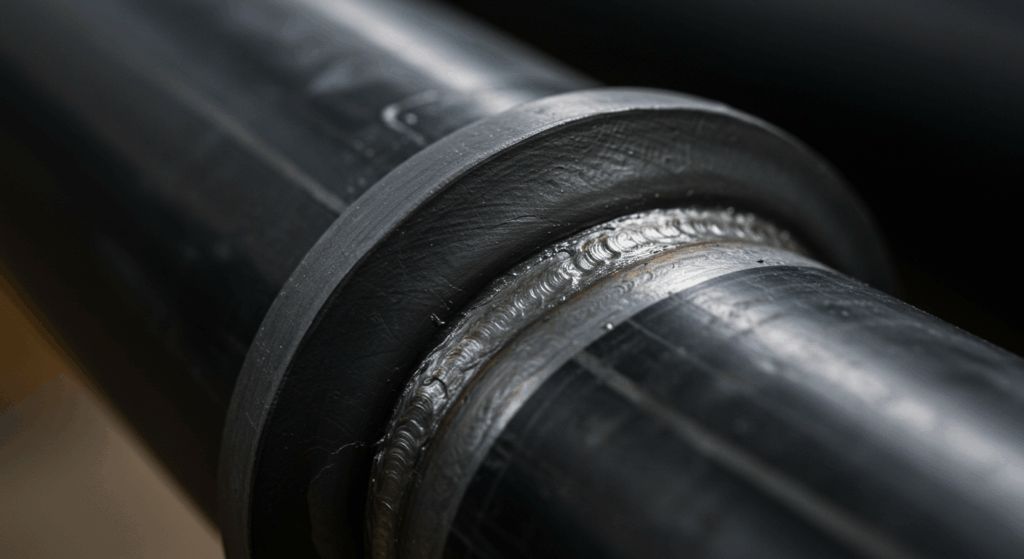
Common Applications of Butt Fusion Welding
- Water and Wastewater Infrastructure: Creating long, continuous pipelines for potable water distribution and wastewater management.
- Gas Distribution Systems: Providing secure, leak-free joints which are a critical safety requirement for gas pipelines.
- Industrial Piping for Chemicals & Slurries: The seamless nature of the joint is ideal for transporting aggressive fluids without risk of leaks.
- Trenchless Installations (HDD & Pipe Bursting): Assembling long strings of pipe above ground before they are pulled through a bore is a primary application.
- Landfill and Leachate Piping Systems: The corrosion-resistant and leak-proof nature of butt fusion welded HDPE pipes makes them perfect for landfill sites.
Our Commitment to Quality and Transparency
Quality Assurance and Data Logging
At PTS, we follow rigorous protocols and use the latest data logging technology to ensure the quality of every butt fusion weld. Our welding parameters—such as heating times, pressures, and cooling times—are closely monitored, documented, and traceable. This provides a complete quality assurance record for future maintenance and project handover.
Cost Considerations
The cost of butt fusion welding depends on factors like pipe diameter, project scale, site conditions, and accessibility. Our team provides transparent quotations that factor in all material, labour, equipment, and project-specific requirements to ensure a cost-effective solution.
Case Study: Butt Fusion Welding in Leicester
Our expertise was demonstrated on a recent project in Leicester involving the installation of a new 1.6km rising main. Our skilled team employed state-of-the-art butt fusion welding techniques to create strong, leak-free joints for the critical PE pipelines, setting a positive tone for the entire project. This work highlights our capability to manage new pipeline projects effectively, a process often followed by our Hydrostatic Pressure Testing services to verify the integrity of the completed line. Read More.
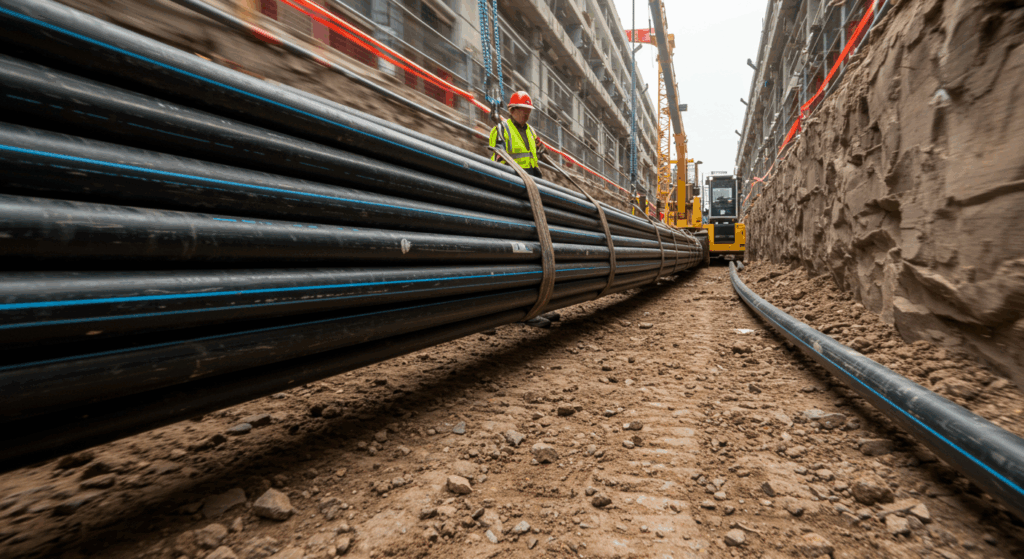
Choose Pipe Testing Services for
Butt Fusion Expertise
Pipe Testing Services is your trusted partner for high-quality butt fusion welding across the UK. With our nationwide coverage, state-of-the-art equipment, and in-depth expertise, we deliver unparalleled solutions tailored to your project needs. Contact us today to discuss your butt fusion welding requirements or to schedule a consultation.
- Phone – 01922 451646
- Email – enquiries@pipetestingservices.co.uk
- Address – Unit 27 Birchbrook Industrial Estate, Shenstone, Lichfield, Staffs, WS14 0DJ

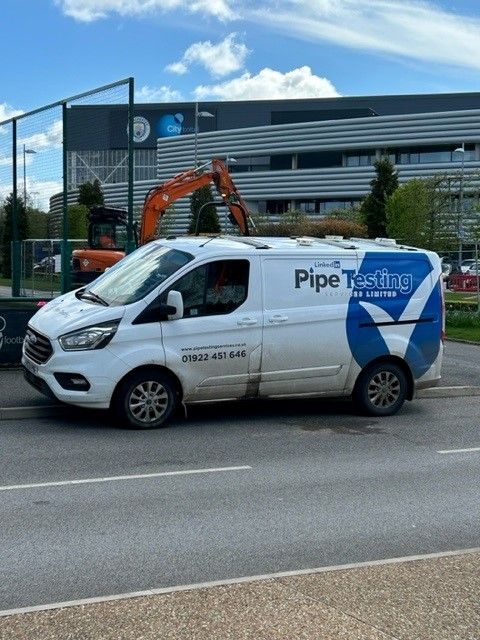
Butt Fusion Welding FAQs
What is the typical joint strength of a butt fusion weld?
When performed correctly according to industry standards, a butt fusion weld will have a tensile strength equal to or greater than the original pipe.
Can butt fusion be performed in cold weather?
Yes, but special precautions must be taken. The welding area may need to be sheltered, and heating and cooling times may need to be adjusted to compensate for low ambient temperatures. Our technicians are trained to work in these conditions.
Are butt fusion welds repairable?
The weld itself is permanent and not repairable. If the pipe is damaged, the affected section must be cut out and a new section can be welded in its place.
What quality checks are performed on butt fusion welds?
Visual inspection of the weld bead size and uniformity is the primary on-site check. Data logging confirms correct parameters were used. For critical applications, further non-destructive testing can be performed.
What quality checks are done on butt fusion welds?
We conduct visual inspections, destructive testing (bend tests), and record key data like heat soak times and cooling rates.
Are there size limitations for butt fusion? installation techniques?
Our capabilities cover pipes from 20mm up to 1200mm diameter for common PE pipe materials.

